The Morning Brew Case
You may have already heard us say it: email marketing is not dead. Look at the projections:
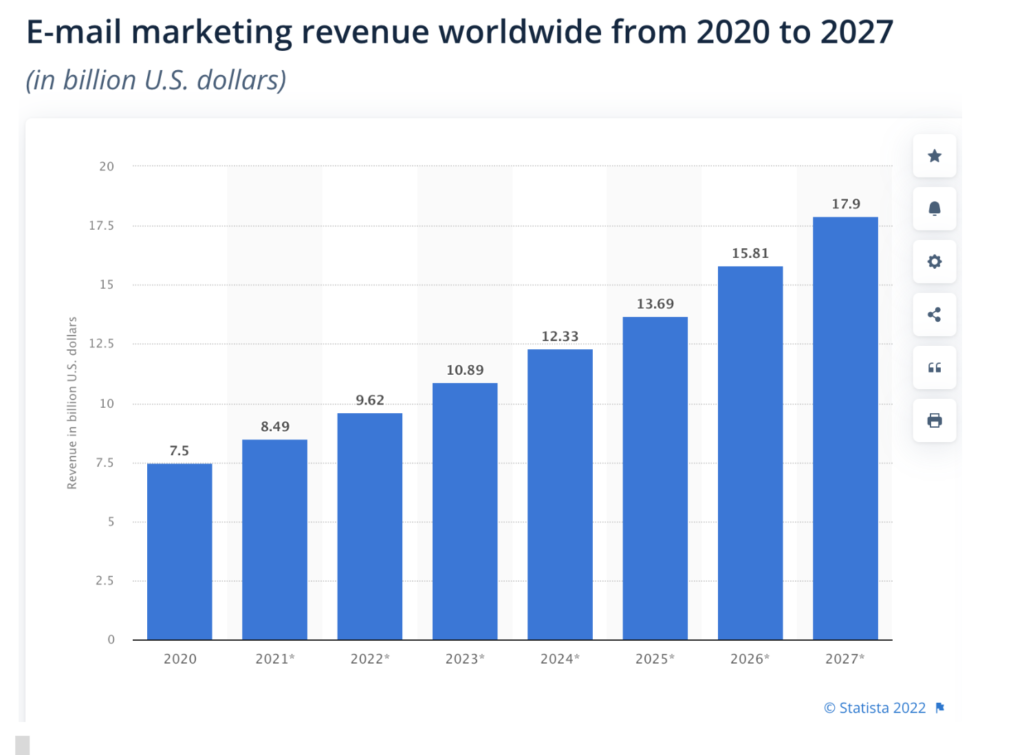
From university newsletter to communication medium
Imagine two college graduates from the University of Michigan, who start writing a business newsletter with witty analysis and insight. The idea was to help people like them to understand more about the subject.
Alex Lieberman and Austin Rief founded Morning Brew in 2015, but it was called “Market Corner” then. For this project, they raised $100,000, thanks to a fund from the Zell Lurie Institute, which finances and supports start-ups at that university.
Today, 8 years later, Morning Brew is a tremendous success with its ad-supported themed newsletter model. Its turnover in 2021 closed at 50 million dollars.
The Morning Brew Business Model
The highlight is that these revenues are not from direct-to-consumer sales emails, but from educational, informational, loyalty, and community building.
Currently, it became a media company with 9 brands. The main one is the one that gives it its name: a free daily newsletter that is sent 7 days a week.
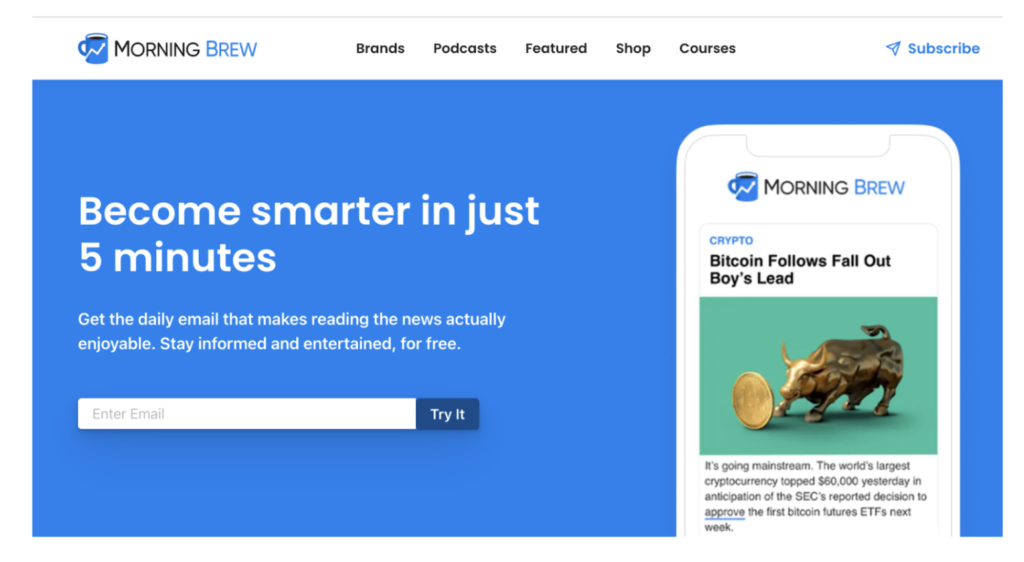
4 years after its launch, new newsletters arrived. Thus, the company grew until it became the medium we know today with 9 newsletters. The latest, dubbed IT Brew, was released in May 2022.
- Morning Brew: news and general information.
- Sidekick: pro tips, tricks for productivity, and entertainment.
- Money Scoop: personal finance, investments, and money.
- Money with Katie: spending habits, best investment practices, and tax strategies.
- Emerging Tech Brew: automation, artificial intelligence, drones, and technologies that will shape the future of business.
- Retail Brew: perspectives and ideas about retail.
- Marketing Brew: about marketing
- HR Brew: about human resources and work.
- IT Brew: all about the IT industry; cybersecurity, big data, software, games, etc.
They are all always free, and each one has a specific frequency.
4 million subscribers
The number seems incredible when it comes to email marketing, but it is real. In 2021, Morning Brew crossed the 4 million subscriber mark and doubled its revenue from 2020.
Almost all revenue comes from advertising, including ads within newsletters. According to Rief: "The company has been profitable since its inception, with current double-digit margins."
The roof is far. Although the pandemic indeed encouraged the consumption of digital information itself, the newsletter format still has a long way to go.
Growth towards other formats: a podcast and YouTube
Rief, 27, and Alex Lieberman, 28, are pushing podcasts and YouTube shows to extend the brand. They are now looking to expand with mergers and acquisitions.
Additionally, Morning Brew has launched an educational product, which includes week-long virtual classes on topics such as audience building, storytelling, finance, and leadership.
The founders sold a majority stake in Morning Brew to Insider in October 2020, valuing the company at $75 million. Insider is owned by German digital media conglomerate Axel Springer SE, but the founders say they operate independently within the group.
This sale definitely boosted growth. Since the end of 2020, the group has grown from a team of 180 on the payroll to 230 workers and has grown the number of brands and its presence on social networks.
That is, the group has different modes of monetization: advertising, and paid courses and they do not rule out becoming a subscription newsletter in the future.
The goal is attention.
"We want to make business news more enjoyable to read," Rief told CNBC. “We see our competition as everyone and no one. It's an attention economy, so we're competing with everyone."
The tone is light and fun, yet witty. A personal vision of the facts of reality in each area of interest and a different way of telling it.
The era of newsletters: community and loyalty
This business model is also followed by traditional media. This is because they found in newsletters a way to segment and retain their digital community.
For example:
- The New York Times: has 97 newsletters on different topics and delivery frequencies: 25 are exclusive to subscribers and 5 are special offers, another monetization model.
- The Washington Post has 98 bulletins.
- CNN: makes 38 newsletters.
Many other sites also have a variety of newsletters. Two other great success stories are:
- Industry Dive: has 26 daily newsletters, including Social Media Today, DTC, and Marketing Dive.
- The Skimm: medium with 7 million subscribers in its newsletter "Daily Skimm", whose audience is "millennial women who need the information to live smarter lives."
But there are also smaller outlets with a large number of subscribers, such as Stacked Marketer, Geekout with Matt Navarra, TechCrunch, Smart Insights, Highrise, and Charter.
Newsletters represent an immense possibility of retaining the audience and generating greater engagement in the communities.
When a person decides to subscribe to a free newsletter that adds value, we marketers know that they have already started to advance in their Customer Journey.
And how do we know it works?
Because we test it, as we always do before telling you about trends and new methodologies.
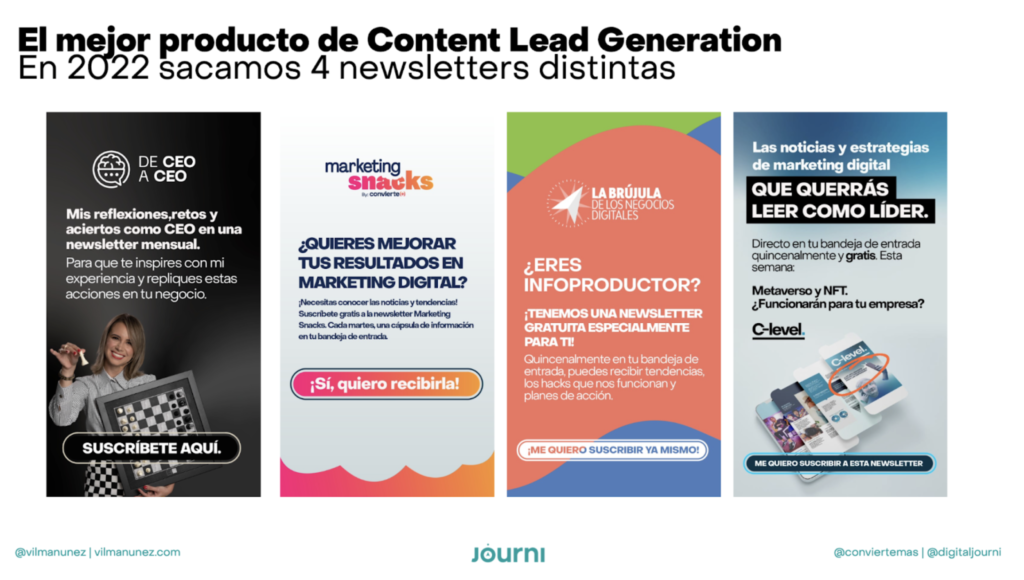
Content Lead Generation is the most effective method to capture leads organically. Learn how it works here.
If you want to subscribe to our newsletters, here are the 4:
- Marketing Snacks (weekly frequency): Trends, strategies, and most relevant tools of the week so that you are always up to date with the digital world.
- The digital business compass (fortnightly frequency): The most up-to-date information in Spanish that every info producer and digital business owner needs to know.
- C-Level Marketing (fortnightly frequency): The news and content that you will want to read every morning as a leader and professional in digital marketing.
- From CEO to CEO (monthly): Reflections, challenges, and successes of Vilma Núñez as CEO so that you can be inspired by her experience and replicate these actions in your business.
Do not use this channel just to sell
It is a mistake to think that email marketing is only for the sale of products and services to customers. A database that receives 80% valuable information and 20% sales content will be much more likely to buy than if you only try to sell.
In addition, newsletters, with an advertising or affiliation model, also generate income and people receive information that adds value and helps them.
What metrics to take into account for your email marketing strategy?
There are 2 that are key:
✅ Open rate
It is the way to know how many people we are reaching. You can have a million subscribers in the database, but if only 10,000 of them open the email, that's the real percentage you're going to engage with.
✅ CTR (Click Through Rate)
It is the click rate on the links included in the email.
We can even add a third: identify the conversion that is generated through email marketing. That is, being able to track how much money was generated thanks to that channel. This metric can be obtained for each email sent to find out which offers, promotions or content works best.
The average email open rate overall is 16.97%, with a CTR of 10.29%, but can go up to 42%, depending on the industry and the brand's work to engage with its audience.
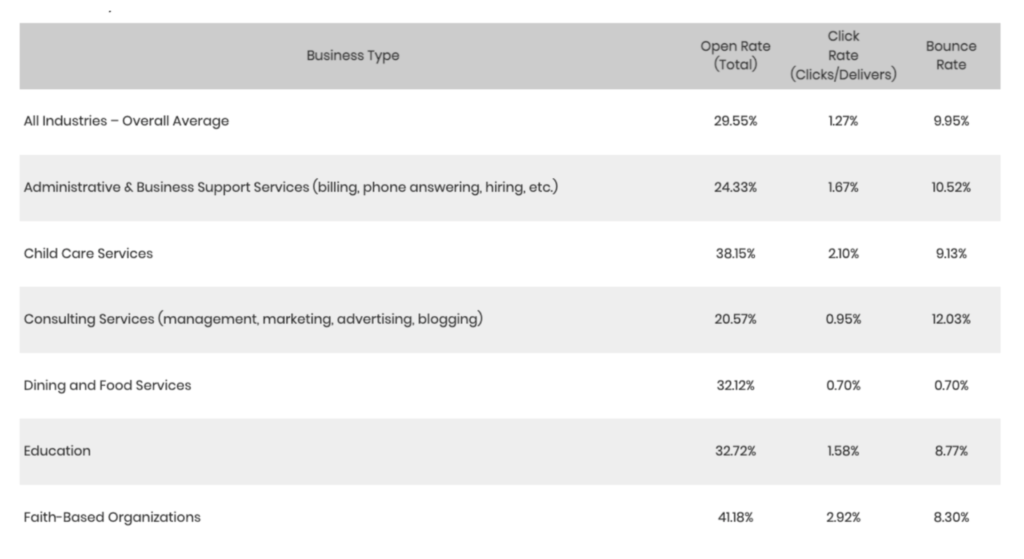
The audiences: from baby boomers to Gen Z
While it is true that Morning Brew's target audience is on average 30 years old, it has a broader target audience, between 25 and 40 years old.
But the adoption of email is not exclusive to this target. All generations consume emails. The data is clear:
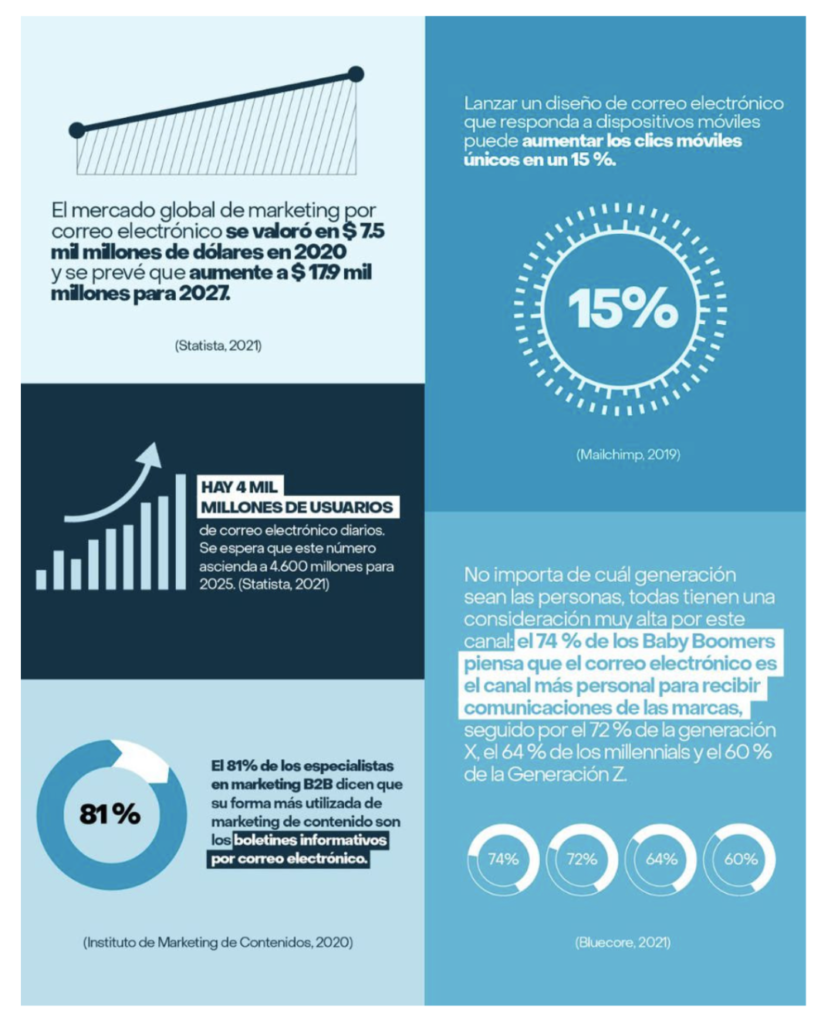
Email marketing is a fantastic tool for capturing leads, nurturing communities, and generating sales in the millions. You don't need huge resources, but you do need a strategy.


Comments
Post a Comment